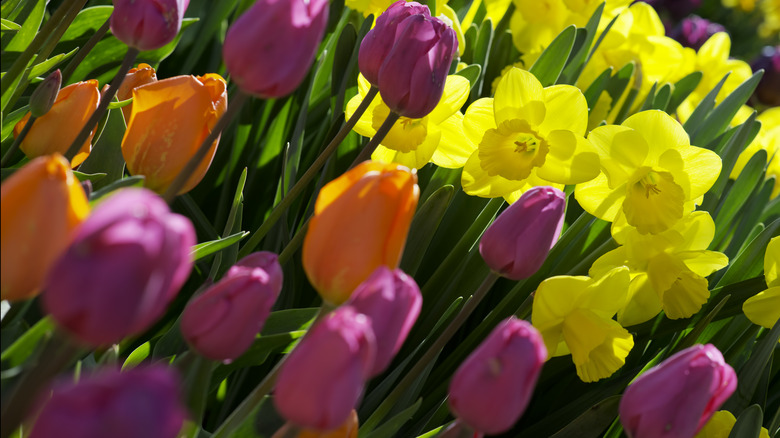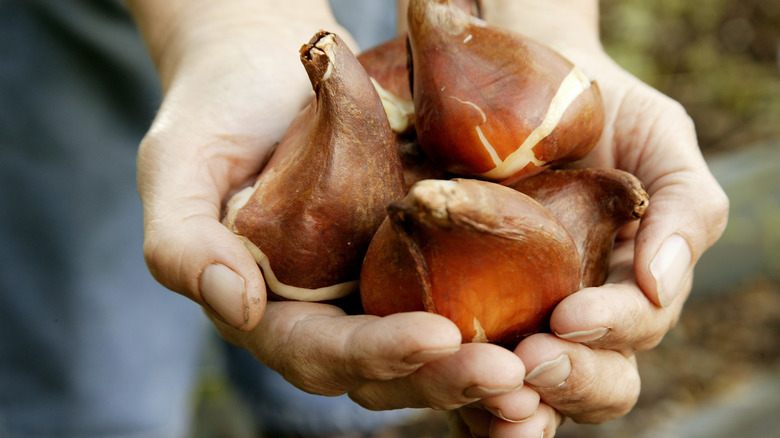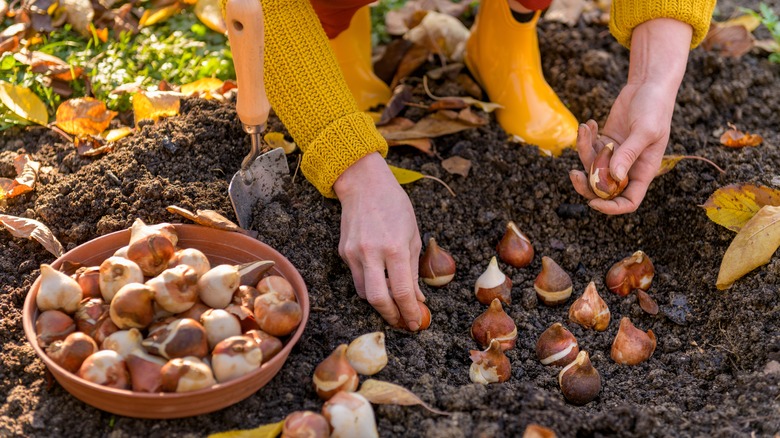Tips For Saving Your Spring Bulbs Once The Flowers Have Bloomed
Few sights are more beautiful than a garden full of tulips, daffodils, and other spring-blooming bulbs, but repurchasing and replanting new bulbs every year can become expensive. Luckily, many bulbs perennialize and can easily come back year after year. Unfortunately, if you're dealing with an overcrowded garden, moving house, or have a few bulbs in a small container, you can't care for the bulbs after the flowers have died without moving them. Thankfully, bulbs can be dug up and saved, which allows you to plant them again in a new location in the fall, or even give them away as gifts. To maximize your bulb-saving success, grow species that perennialize well, wait until the right time to dig them up, assess your bulbs' health and save only the best ones, and store and replant bulbs properly.
While most spring flowering bulbs are technically perennials, some types of tulips don't come back reliably every year. This is especially true of fancier flowers like parrot tulips and double tulips. You are far more likely to be able to save and replant bulbs from species that naturalize well. This can include tulips like Darwin hybrids and fosterianas, as well as daffodils, and even crocuses.
When and how to dig up your bulbs
If you've decided that your bulbs need to be dug up, wait until after they have finished blooming for the spring and the foliage has died back before removing them. While it may be tempting to remove the bulbs as soon as they are done flowering, you must remain patient because the leaves are making energy for the bulb to store for the next year. While you must wait until late June or early July to dig up many of your bulbs, doing so significantly increases the chances of the plants surviving and returning the next year. You may even want to give your plants some extra fertilizer while they're flowering to help with this.
Once the bulbs' foliage has yellowed and died back, you can safely remove them from the ground. When digging up your bulbs, check their health, and don't save any bulbs that appear mushy, rotten, or moldy. Small bulblets clinging to the larger bulbs can also be discarded. Then brush the loose dirt off your bulbs and allow them to dry. While these bulbs can be immediately transplanted to a different part of your garden, you can also store them to replant in the fall.
Storing and replanting your bulbs
After your bulbs have dried out they are then ready to store. You must store them in a cool dark place, with a temperature below 60 degrees Fahrenheit, but above freezing. Ideally, you should hang the bulbs in a net or place them on a layer of sand or vermiculite.
Once autumn arrives, your bulbs will be ready to once again return to the ground. Confirm that your bulbs are still in good condition by checking for traits of a healthy bulb, which include firmness and a lack of mold. Choose a sunny location, as most spring flowering bulbs require full sun and well-draining soil. Bulbs should generally be planted twice as deep as their width. While bulbs may need to be fertilized at planting, they should not be overfertilized, so it's best to do a soil test to check your soil's health first.


